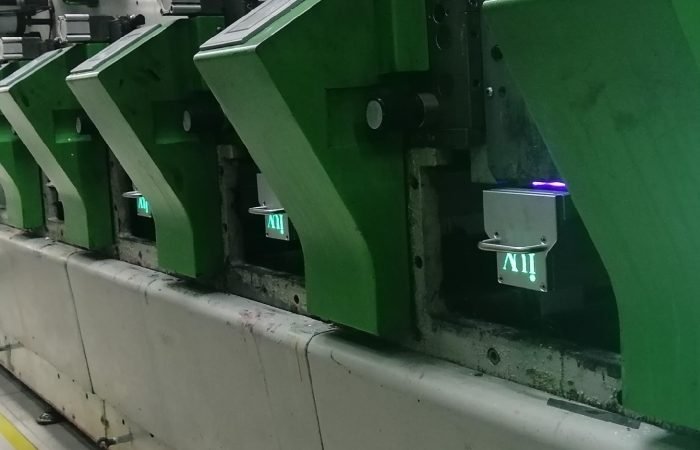Unlock Speed and Efficiency: How UV Curing Systems Slash Drying Times in Commercial Printing
In the fast-paced world of commercial printing, every second counts. Businesses demand vibrant, durable prints delivered on tight deadlines. Achieving this often hinges on efficient drying processes. Traditional inks and coatings can present significant bottlenecks, leading to extended production cycles and increased costs. However, a powerful technology has emerged to dramatically reduce drying times: UV curing systems.
These innovative systems utilize ultraviolet light to instantly cure inks and coatings. This process, often referred to as UV curing or UV drying, offers a transformative advantage over conventional methods. Instead of relying on heat or evaporation to dry, UV curing initiates a photochemical reaction. Specific photoinitiators within the ink or coating absorb the UV light. This absorption triggers rapid polymerization, transforming the liquid ink or coating into a solid, durable film almost instantaneously.
The Magic of Instantaneous Drying
The impact of this instantaneous solidification on drying times is profound. Consider the traditional offset and flexographic printing processes. These often involve long drying tunnels or multiple passes through drying units to achieve adequate ink set. This not only consumes considerable energy but also dictates the maximum speed of the printing press. With UV curing, this waiting game is eliminated. As the ink or coating passes under the UV lamps, it is cured on the spot. This means prints are dry and ready for the next process – be it finishing, cutting, or packing – immediately after exiting the press.
Revolutionizing Label Printing
For the label printing industry, UV curing has been nothing short of a game-changer. Narrow-web label presses, in particular, benefit immensely. These presses operate at high speeds, and the ability to cure inks and coatings instantly allows them to maintain those speeds without the risk of smudging or offsetting. This is critical for producing high-quality labels for food, beverage, pharmaceutical, and cosmetic products, where vibrant colors and sharp details are paramount.
UV-curable inks offer excellent adhesion to a wide range of substrates commonly used in label printing, including paper, films, and foils. Furthermore, the cured inks provide superior resistance to abrasion, chemicals, and fading, ensuring the longevity and visual appeal of the labels. The reduced drying time also means less space is required for drying equipment, a significant advantage in often space-constrained print shops.
Flexographic Printing: Enhanced Throughput
Flexographic printing, a versatile method used for packaging, labels, and commercial print, also sees substantial gains with UV curing. Flexo inks traditionally relied on evaporation or heat to dry. This often limited press speeds and required careful management of ink viscosity. UV-curable flexo inks, however, cure in a fraction of a second. This allows flexo presses to run at their maximum mechanical speeds, leading to a significant increase in overall throughput.
The ability to print multiple colors with immediate curing between stations is another major advantage. This eliminates the need for inter-color drying units, simplifying press design and reducing energy consumption. The durability of UV-cured flexo inks also enhances the quality and performance of printed packaging, making it more resistant to scuffs and handling during transit and in retail environments.
Offset Printing: Faster Runs, Broader Capabilities
While offset printing has historically used different drying technologies, the integration of UV curing has opened up new avenues for speed and substrate versatility. Traditional offset inks often require longer drying times, especially on non-absorbent substrates like plastics and foils. UV curing enables offset presses to print on these challenging materials with ease. The instant cure means no ink transfer to the underside of the next sheet, allowing for immediate stacking.
This capability is particularly valuable for commercial printers producing high-volume print runs where efficiency is key. The faster turnaround times translate directly into increased productivity and the ability to take on more jobs. The enhanced durability of UV-cured offset inks also means that prints can withstand more rigorous handling, which is beneficial for point-of-sale materials, book covers, and other applications requiring a robust finish.
Narrow-Web Printing: Precision at Speed
Narrow-web printing, often dedicated to labels and flexible packaging, thrives on speed and precision. UV curing systems are an indispensable part of modern narrow-web presses. The confined space of these presses necessitates efficient drying solutions that don’t impede the printing process. UV lamps, whether traditional mercury vapor or the more energy-efficient LED UV systems, provide this instant drying capability.
LED UV curing, in particular, offers distinct advantages. These systems run cooler, consume less power, and have a much longer lifespan than mercury lamps. They also emit a narrower spectrum of UV light, which can be more efficient for curing specific ink formulations. For narrow-web printers, this means faster job changeovers, reduced energy bills, and the ability to print on heat-sensitive substrates without degradation.
Beyond Drying Times: Additional Benefits
The advantages of UV curing extend far beyond just reduced drying times. The environmental impact is also a significant factor. UV-curable inks and coatings often contain very low or zero VOCs (Volatile Organic Compounds), contributing to a healthier working environment and reducing air pollution compared to some solvent-based inks.
The quality of the final print is also enhanced. UV-cured inks typically offer higher gloss levels, sharper dot definition, and exceptional color vibrancy. The cured film is also exceptionally durable, providing excellent resistance to scratching, chemicals, and fading, making the printed product more resilient and longer-lasting.
In conclusion, UV curing systems are no longer a niche technology but a fundamental component for achieving efficiency, quality, and speed in commercial printing. Whether you’re involved in label printing, flexographic, offset, or narrow-web applications, embracing UV curing technology is a strategic move that can dramatically reduce drying times, boost productivity, and deliver superior print results. The instant solidification it provides is a key enabler for meeting the demanding pace of today’s printing market.












